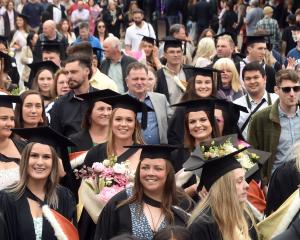University of Otago archaeology Professor Richard Walter is working with a group of archaeology students, in collaboration with Kati Huirapa Runaka ki Puketeraki, on a "dig" at Doctors Point, north of Dunedin city.
He said archaeologists had known about the ancient site for a long time, but had not excavated it until now.
"Most of us were under the impression that it had been mostly destroyed by erosion from the sea.
"It was partly because of the erosion that we decided to do the work here. And in fact, we’ve found that there’s quite a lot of the site left."
The dig started two weeks ago, and to date, the team had uncovered some old fire pits, a lot of food debris, stone-flake tools and bone fish hooks.

"This is not a moa-hunting site.
"We’re really interested in what people were doing on this coastline after moa had declined."
It appeared they turned to more intensive uses of marine resources, he said.
"We’ve found quite good evidence for the ways in which they used the marine environment and ecology.
"We’re understanding the different resources that people were relying on and the different fishing zones they were targeting."

"It’s also encouraging because we’re managing to get a lot of information about this period of time, that we didn’t think we would be able to get."
Archaeology masters student Claire Thorrold said she and fellow diggers were revelling in the opportunity.
"It’s very rare to be able to do this on our own back doorstep."
She was amazed at how well preserved the site was.
The dig was expected to conclude at the end of next week.










